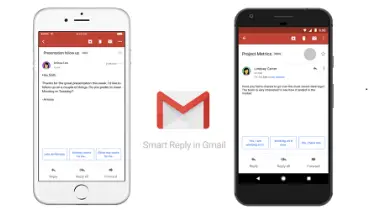How to Ensure Your Marketing Content Is Well-Written

The importance of content marketing cannot be overemphasized today. Done correctly, content marketing can produce dramatic results for your business, including increasing website traffic, engagement, brand personality, customer loyalty, sales, and conversions.
Social media posts, blog posts, short articles, and email newsletters are some of the top types of content brands create to market their businesses. In order to see good results, you must ensure that your content is not only well-written, but also tailored well to your target audience.
There are some basic tips you must follow to ensure your content is well-written. Firstly, make sure you do not oversell your product or service. Also avoid being too salsey and using jargon too much. Instead, focus on delivering value in a persuasive and captivating way for the reader.
Skills Required to Produce Great Content
Whether you or a hired/in-house content writer are creating blog posts, articles, website copy, or other types of online content, it's crucial to not only have a clear understanding of how to create engaging and informative content, but also have the necessary skills to create that content.
The ability to research and organize your ideas effectively coupled with strong editing skills are required to ensure content is free of errors and typos, which can lead to miscommunication and or misunderstandings of your intended message.
Moreover, the content writer must have a knack for crafting attention-grabbing headlines and engaging opening paragraphs. With so many sources of information online, audiences simply are not willing to read beyond the first paragraph (and even sentence) of a story unless it grabs their interest, making writing a killer lead or opening paragraph a very important skill for content writers.
Additionally, the content writer must be able to sharply target the intended audience. Let’s say your target audience is college students just like Jan Elizabeth Watson, then the language, message, and complexity used must be suited to that particular audience.
If, on the other hand, your target audience is elite business professionals, your content must adapt to suit that audience too. For example, content targeting elite business people must not be watered down too much as it might be misconstrued as condescending or even insulting to the professionals.
Dos and Don’ts of Well-Written Content to Look Out for
Whether you're looking to build your career as a content writer or simply want to take your marketing content to the next level, honing those crucial writing skills mentioned above will help.
In addition, follow the following dos and don’ts of content writing to see noticeable improvements in your written content and achieve your desired results:
1. Do not oversell your product or service
When creating marketing content, it's important to balance your promotional content with informative and entertaining/fun posts. Marketers generally stick to the 80/20 rule on social media: 80 percent social content, and 20 percent promotional content.
It's also important to focus on the reasons why customers should choose to do business with you. The right mix and balance of informative/fun and salesy content will keep your audience and potential customers interested and coming back for more.
2. Do not overuse jargon
Content that is chockful of jargon, extraneous material, and obnoxious words can be hard to read and understand. Overuse of jargon can confuse readers, make them feel isolated, and cause people to disconnect from your message. This ultimately reduces the impact of your writing.
If you must use jargon, it is necessary to define any jargon you use at least once in the first instance it occurs to improve understanding and facilitate comprehension. If everyone understands the jargon, then it can be a very efficient way of communicating.
3. Do Consider Your Target Audience
Your target audience is the specific group of people or group of consumers that are most likely to want to hear your message or want to buy your product or service. These are the people you want to read your content and take a desired action after reading the content, such as making a purchase.
Consider your target audience’s age, gender, location, income, interests, preferred platform, and any other factors that can dictate their behavior when creating your content. This will ensure that the content you create resonates, is well suited, and appealing to them, which in turn increases the chances of the content being successful and bringing the desired results.
4. Do Craft Catchy Headlines and Descriptive Subheadings
When writing content, you should use catchy headlines to instantly catch the attention or readers and draw them in. Your opening first paragraph will then hook them into your content and encourage them to read on to learn more.
Meanwhile, supporting subheadings help to breakup large blocks of text on a page and organize the various parts of your message into focused, easy-to-read, coherent paragraphs. This helps readers to scan the content and pick out what is useful to them, and can also create interest.
Use distinct fonts for headings (H1) and subheadings (H2/H3) to mark them off from the surrounding text and to convey hierarchy. Make sure to spell out clearly what each subheading promises and how it can benefit the reader.
5. Do Deliver Value in Your Content
The best way to deliver value in your content and make people crave for what you write is to always focus on solving people's problems, or delivering some other form of value to them. For example, you can be the first to cover breaking news, offer a new solution to an issue many people are facing, or provide a humorous take on things to relive stress and tension.
Moreover, incorporate different forms of content within a single piece to set your content apart from the rest and offer your reader even more value. Images, memes, and GIFS are a great way to add interest to your content and make it more shareable by your readers. Adding images and videos has also been shown to improve SEO rankings.
However, do not overuse images, visuals, and videos in your content too. Only use them if the context makes sense for the content, and if it is appropriate for the audience.




















